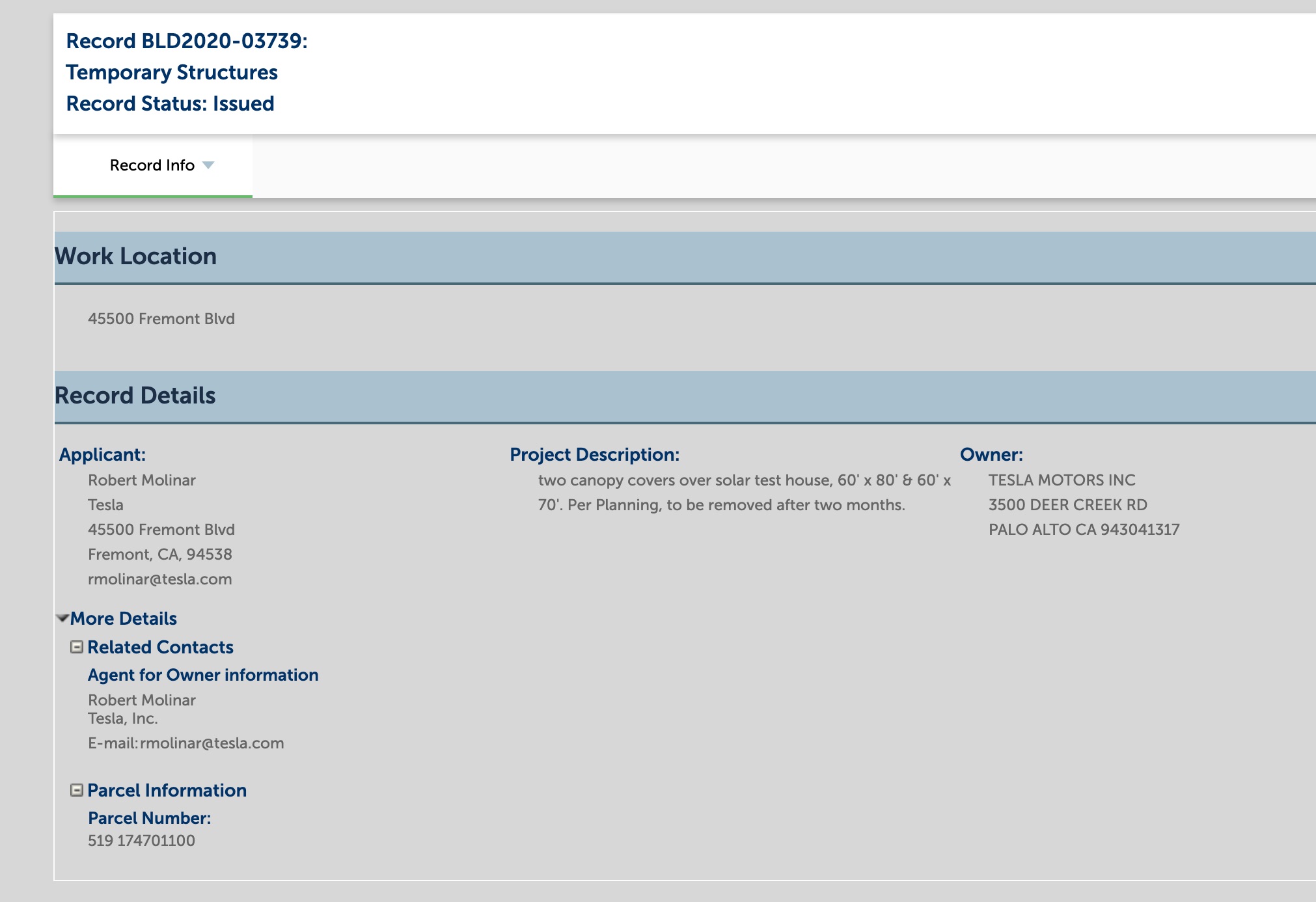Tesla has plans for the installation of new tent-like canopies for a “solar test house” at its factory, according to a new building permit issued by the City of Fremont.
Per the description noted in the initial filing, Tesla is seeking “two canopy covers over solar test house” that measure approximately 60′ x 80′ & 60′ x 70′. The structures will be temporary and removed after two months.
While there’s no indication on the purpose for the canopies, CNBC indicates that the canopies are meant to conceal research and development on its solar test house from prying eyes, and protect the project from potential delays due to rains.
Seeing progress in the efforts of Tesla to install more Solarglass rooftops brings it another step closer to mass producing the third version of the solar roof tiles. Likewise, such developments can help Tesla capitalize on California’s new building requirements that require newly-built homes to have solar systems starting next year. The state is the first in the country to require solar panel installations on single-family homes and multi-family structures.

Based on the 2019 Building Energy Standards in California, the solar requirement increases the cost of building a new home by roughly $9,500 but has the potential to save homeowners about $19,000 in energy bills and maintenance costs over 30 years. The Energy Commission estimates that an average home will save around $80 on cooling, heating, and lighting bills. Customers such as Amanda Tobler from the Bay Area echo the possibility that these numbers can be achieved. The Toblers had their Solar Roof tiles installed in March 2018 and enjoys more than enough power for their house and two plug-in vehicles as a result.
Tesla also recently posted job openings that aim to beef up its installation teams in California, Florida, Nevada, and Texas. The company looks to hire licensed electricians, Solarglass roofers, installers to join its operations who will most likely not install just its solar tiles but also help to put up Powerwalls and regular solar panels.
As the energy company installs more Solarglass rooftops, it will also create more jobs to fill the needs of its facility in Buffalo, New York and possibly save the company $41.2 million in penalties. Tesla promised to produce its solar panels in the said facility, which used $750 million in taxpayers’ money and the deal requires it to generate around 1,500 jobs by April next year.
Tesla CEO Elon Musk says he sees the company’s energy business to grow as big as its electric vehicle business. In Q3, Tesla deployed 43MW of solar or 48 percent more compared to the previous quarter.
“…the really crazy growth for as far into the future as I can imagine. … It would be difficult to overstate the degree to which Tesla Energy is going to be a major part of Tesla’s activity in the future,” he said during with Wall Street analysts.
Tesla started accepting orders for its V3 Solar Roof in October and Musk revealed that it plans to eventually install 1,000 solar roofs a week. Interested homeowners who want a Solarglass rooftop can use the company’s online configurator to estimate the costs. The estimated pricing for a 2,000 sq. ft. roof with 10kW solar is $33,950 after a federal tax credit of $8,550.
As of 2018, there are only 15 to 20 percent of California single-family houses with solar panels installed according to the estimates of the California Building Industry Association.

<!–
–>


